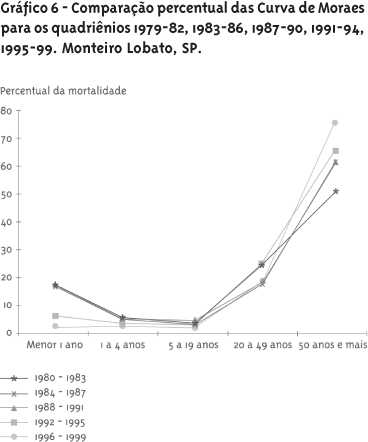This paper approaches the query on why agriculture modernization, although promoting substantial gains in productivity, did not succeed in chasing away the specter of famine for great portions of the world population, with significant impacts over their health. It intends to verify whether or not the paradigms of epidemiological and nutritional transitions would apply to the study of populations that were rendered deprived in the process of modernization of agriculture in the municipalities of Monteiro Lobato and Santo Antônio do Pinhal, State of São Paulo, Brazil. The insertion of these municipalities into the so-called agriculture modernization was assessed through the use of farming and cattle raising inputs. Coefficients of general mortality and curve of proportional mortality were used to verify the epidemiological transition. Nutritional transition was addressed to through the secular tendency of growth, prevalence of obesity and, feeding habits. It was observed that, notwithstanding the significant fall in infant mortality, the secular tendency of growth for those who were born or who have passed their first infancy within those municipalities was rendered effectively true, in a discrete fashion, only for women, indicating, this way, a deficiency in terms of energy consumption. On the other hand, the prevalence of obesity is high, mainly among women. The population's diet is monotonous, with low-energy density. It concludes that the paradigms of epidemiological and nutritional transitions, based on a phase- and developmental-wise approaches of the morbid-mortality processes, are neither able nor enough to explain the complexity of the situations described in this paper.
Epidemiological transition; Nutricional transition; Rural modernization














